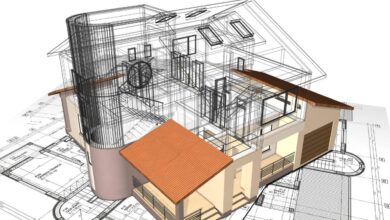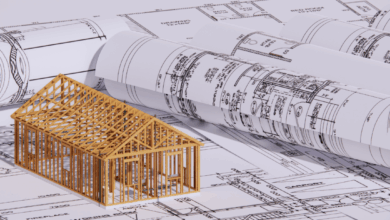Designing Responsibly: Ethics and Law in Building

Architecture, at its core, is a profession entrusted with the public’s well-being, translating artistic concepts and functional needs into enduring, tangible structures that profoundly influence the safety, health, and welfare of the people who inhabit them.
This immense responsibility means that the practice of designing and constructing buildings operates not merely in the realm of aesthetics, but within a highly complex and rigidly enforced legal and ethical framework that governs every stage of a project, from initial concept to long-term occupancy.
Navigating the world of building is a continuous negotiation between creative vision and non-negotiable regulations, forcing architects, engineers, and developers to master complex areas such as stringent building codes, accessibility mandates, and the ever-present risk of professional liability.
Ignoring the legal and ethical dimensions of design is not only professionally reckless but can lead to catastrophic failures, immense financial penalties, and, most tragically, the loss of human life, making rigorous compliance an absolute, essential component of good architectural practice.
Furthermore, in the 21st century, the ethical mandate has expanded beyond mere structural safety to include critical societal issues like environmental sustainability, social equity, and the responsible preservation of cultural heritage, requiring modern practitioners to be both legal experts and conscientious citizens.
Understanding these complex layers of accountability and regulation is the indispensable foundation upon which all trustworthy and responsible building is founded.
Pillar One: The Legal Imperatives (Health, Safety, and Welfare)

The fundamental legal requirements governing construction are centered on protecting the public health, safety, and welfare (HSW), demanding meticulous adherence to regulatory standards.
1. Building Codes and Zoning Ordinances
Building Codes are the non-negotiable sets of rules that govern the design and construction of structures, while Zoning Ordinances dictate how land can be used in specific areas.
A. Life Safety and Fire Protection
A. Codes rigorously define the required fire resistance ratings for all structural elements, ensuring walls, floors, and columns can withstand fire for specified time periods.
B. They dictate the necessary means of egress (exits, stairwells, corridors) to allow occupants to evacuate safely and quickly during emergencies.
C. Requirements for sprinkler systems, fire alarms, and smoke control are mandatory components of the life safety plan.
B. Structural Integrity
A. Codes specify minimum design loads to ensure the structure can safely withstand anticipated dead, live, wind, and seismic forces.
B. They govern the quality and specification of all materials, from the concrete mix design to the welding standards for steel connections.
C. Compliance with these structural provisions prevents catastrophic collapse and ensures longevity.
C. Zoning and Land Use
A. Zoning laws determine what kind of building (e.g., commercial, residential, industrial) can be constructed on a particular parcel of land.
B. They set limits on the building’s height, setback (distance from property lines), and density, protecting neighborhood character and ensuring proper light and air.
C. Architects must navigate these complex regulations before the design process can even begin, often requiring variances or special permits.
2. Accessibility Compliance (ADA and Universal Design)
Designing for accessibility is a fundamental legal requirement and an ethical mandate to ensure spaces are usable by all members of society, regardless of physical ability.
A. The Americans with Disabilities Act (ADA)
A. In the United States, the ADA sets detailed federal standards for access to public spaces, facilities, and commercial buildings.
B. Requirements cover everything from ramp slopes and door widths to the height of drinking fountains and bathroom grab bars.
C. Compliance is not optional; failure to adhere can result in expensive lawsuits and costly, mandatory retrofitting.
B. Universal Design Principles
A. Beyond mere compliance, Universal Design is an ethical approach that seeks to create environments that are inherently accessible and usable by people of all ages and abilities without the need for special adaptation.
B. Principles include creating spaces that require low physical effort, provide intuitive use, and offer clear, perceptual information.
C. This approach yields better design for everyone, such as gently sloped walkways replacing abrupt changes in level.
Pillar Two: Professional Liability and Risk Management
The architect and engineer operate in a high-risk environment, where errors or omissions in design can lead to massive financial and physical consequences, making liability management paramount.
1. Understanding Legal Liability
The architect is typically held liable for the professional standard of care, meaning the design must meet the same level of competence as other qualified professionals in the same region.
A. Errors and Omissions (E&O)
A. E&O claims are the most common liability issue, arising from mistakes, inaccuracies, or failures to include necessary information in the construction documents.
B. Examples include miscalculating a structural load, specifying a non-existent material, or failing to detail a critical water-proofing junction.
C. The firm must carry Professional Liability Insurance to cover the financial defense and settlement of such claims.
B. Breach of Contract
A. Liability can arise from failing to perform the services clearly outlined in the professional services agreement with the client.
B. This includes failing to meet specified deadlines, exceeding the agreed-upon budget without a change order, or not providing the contracted level of site supervision.
C. Clear, precise contracts that meticulously define the scope of work are the primary defense against these claims.
2. Risk Mitigation Strategies
Proactive management of design documentation and site activities minimizes legal exposure.
A. Rigorous Documentation
A. Maintain a comprehensive record of all decisions, client instructions, meeting minutes, and Requests for Information (RFIs) throughout the project.
B. This meticulous paper trail is essential for defending the firm’s actions and demonstrating that the standard of care was met in case of a future dispute.
B. Change Order Management
A. Any client-requested deviation from the original contract scope must be immediately documented with a formal Change Order (CO).
B. The CO must clearly state the additional fee, time extension, and any changes in responsibility before the work is performed.
C. Performing “out-of-scope” work without a signed CO is a critical and dangerous business error.
C. Site Observation vs. Supervision
A. The architect’s role during construction is typically Observation, ensuring the work generally conforms to the contract documents, not Supervision.
B. The contract must clearly state that the Contractor is solely responsible for construction means, methods, techniques, and safety on the job site.
C. Architects must carefully limit their actions and communication on-site to avoid inadvertently assuming the contractor’s liability.
Pillar Three: The Broader Ethical Mandate

Beyond the minimum requirements of the law, the architect has an expanding ethical duty to the environment, society, and the profession itself.
1. Environmental Stewardship
Modern ethics mandate that architects actively design for a sustainable future, minimizing the structure’s negative impact on the planet.
A. Sustainable Design Obligation
A. Architects have an ethical duty to prioritize energy conservation, water efficiency, and the responsible selection of materials.
B. This includes advising clients on pursuing high-performance certifications like LEED or Passive House, even if the client initially resists the upfront cost.
C. Designing to mitigate the structure’s contribution to climate change is a core HSW duty in the 21st century.
B. Material Health and Transparency
A. There is an ethical duty to specify materials that are non-toxic and do not off-gas harmful Volatile Organic Compounds (VOCs) into the interior air.
B. Architects should demand transparency from material manufacturers regarding the chemical content and embodied energy of their products.
2. Social Equity and Responsibility
The building profession has an ethical role in fostering a just and equitable society through its work.
A. Affordable Housing Design
A. Architects have an ethical opportunity to dedicate time and expertise to designing high-quality, dignified, and sustainable affordable housing solutions.
B. This addresses social inequity by providing safe and well-designed homes for low-income populations.
B. Preservation and Cultural Context
A. Architects must respect the historical, cultural, and aesthetic context of the sites they develop.
B. There is an ethical duty to advocate for the preservation of significant historic structures and cultural landmarks rather than pursuing immediate demolition for new development.
C. New designs should enhance, rather than destroy, the existing social and urban fabric of a community.
3. Professional Conduct
Ethical guidelines govern the architect’s conduct in dealing with clients, colleagues, and the public.
A. Conflict of Interest
A. Architects must avoid any situation where their professional judgment could be compromised by a personal or financial interest.
B. Accepting undisclosed gifts or favors that might influence a material specification or design decision is a severe ethical violation.
B. Honest Representation
A. Firms must honestly represent their qualifications, past experience, and capacity to take on a project during the selection process.
B. Accurate and truthful billing and time tracking are essential ethical obligations to the client.
Conclusion
The legal and ethical dimensions are the true master builders of the architectural profession.
Adherence to strict building codes and zoning laws is mandatory for protecting public health, safety, and welfare.
Compliance with accessibility standards is both a fundamental legal obligation and an ethical necessity for social equity.
Professional liability is managed through meticulous documentation, clear contracts, and rigorous risk mitigation strategies.
The architect must always maintain professional liability insurance to cover errors and omissions that may occur in design.
The ethical mandate expands beyond structural safety to include environmental stewardship and active advocacy for sustainable design.
A clear understanding of legal contracts and the difference between site observation and supervision is vital for liability protection.




